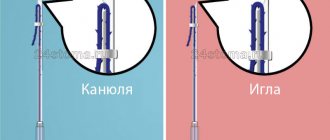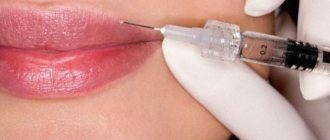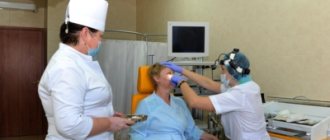Blepharoplasty is considered a simple operation in plastic surgery. The procedure allows you to eliminate bags under the eyes, remove drooping eyelids, and also correct the shape of the eyes. However, complications after blepharoplasty can also occur. Sometimes the cause is the individual characteristics of the patient’s body, but in some cases the problem can be caused by the surgeon’s mistakes.
The essence of the procedure
Blepharoplasty is an effective, low-traumatic way to rejuvenate your appearance. During the process, the surgeon cuts the upper eyelid along the crease or the lower eyelid, just below the eyelashes, and then removes the subcutaneous fat. Thanks to this, the face after blepharoplasty looks younger and fresher, bags under the eyes disappear, and the look becomes more open. After completion of the plastic surgery, a neat suture is applied, which heals completely over time, remaining almost invisible.
The transconjunctival technique is often used. During the process, the incision is made from the inside of the eyelids using a laser, making the seam invisible. The risk of complications after transconjunctival blepharoplasty is minimal if the operation is performed by an experienced surgeon. The result will depend on the patient, on how he will behave in the postoperative period, and how accurately he will adhere to the requirements of rehabilitation.
Types of operations
Modern methods of aesthetic medicine make it possible to restore the eyelid area without surgical intervention. Injection programs are used, and laser correction is also carried out. Traditional surgical methods are more traumatic, but the effect of the intervention is more pronounced.
Types of blepharoplasty:
- Transconjunctival blepharoplasty eliminates the need for sutures. The incision is made on the inside of the eye's lining, called the conjunctiva. During the operation, it is possible to get rid of hernias, ptosis, and skin stretching. The recovery period lasts up to 10 days, the result lasts from 7 to 10 years.
- Lower eyelid surgery is performed to eliminate bags and swelling that give a tired expression to the face. Excess fat is removed or redistributed, resulting in a natural look. Incisions are made under the eyelash line from the outer edge; when made from the inner edge, it is possible to do without stitches.
- Upper eyelid correction may be prescribed to improve vision. For cosmetic purposes, it helps to cope with drooping eyelids; during the operation, a manual brow lift is performed. An incision is made in the folds of the upper eyelid, and excess fat and skin are excised.
- A circular lift allows you to correct the upper and lower eyelids, helping to cope not only with puffiness, but also with pronounced wrinkles.
- Canthopexy - during the operation it is possible to lift the outer corner of the eye, visually eliminating a tired, sad look.
- Singapura - by creating a fold on the upper eyelid, it is possible to give a European shape to Asian eyes.
Edema
Swelling is a normal reaction of tissues to external injury or the occurrence of pathological processes in the body. This complication after blepharoplasty, surgery to change the shape of the eyelids, occurs as a result of an increase in the level of vascular permeability. More liquid blood enters the damaged area through the vascular walls than usual. This is important to speed up healing.
Swelling of the eyelids after blepharoplasty is not considered a pathology. If they persist for 10 days or longer, you should still consult a doctor to find out the cause of this effect. Additional symptoms accompanying swelling are headache, blurred vision, and diplopia.
Indications and effectiveness of use
Thanks to aesthetic medicine, there are many ways to preserve youth and beauty for many years. Despite the fact that blepharoplasty is an operation, recovery after it is quite quick. Modern methods make it possible to speed up the rehabilitation period, and the result will please you from 6 to 10 years.
Eyelid correction can be performed by young people to change the shape of the eyes and other anatomical features starting from the age of 18. Indicated at a more mature age, after 35–45 years. Impaired lymph flow leads to excess adipose tissue, and aesthetic problems worsen over the years. Drooping eyelids, puffiness, and shifting eyebrow lines make the look tired and expressionless.
Indications for:
- excess skin of the upper and lower eyelids;
- fat bags of the eyelids;
- drooping outer corners of the eyes;
- lower eyelid wrinkles;
- desire to change the shape and shape of the eyes.
Surgical intervention is performed in the orbital region of the eye tissue, therefore, in addition to general tests, consultation with an ophthalmologist will be required. This is not always the best way to solve aesthetic problems. To restore firmness, elasticity of the skin, and activate lymph flow in the beauty industry, there are effective hardware and injection procedures.
Attention! Blepharoplasty is the only way to correct the shape and change anatomical defects at a young age. It is also used after 40–45 years for a radical transformation, if the result of non-surgical methods does not live up to expectations.
Hematoma
The main cause of hematomas is damage to the blood vessels in the eyelid area. Hemorrhages may occur immediately or 2-3 days after surgery. Based on the extent of damage, experts divide them into the following:
- Subcutaneous – when blood accumulates under the skin in the area of the surgical incision. This hematoma is safe and usually resolves on its own within one to two weeks. You can reduce the regeneration time through self-massage, as well as by treating the area with a special ointment prescribed by your doctor. In isolated cases, it may be necessary to open the wound and remove the blood accumulation.
- Tense. Similar to subcutaneous, but blood accumulates in a much larger volume. In this case, the procedure of opening the edges of the wound is necessarily used in order to subsequently draw out the blood and suturing the damaged blood vessels.
- Retrobulbar. The cause of such hematomas is damage to large blood vessels that are located behind the eyeball. If blepharoplasty is minor, then pathology occurs extremely rarely. The main symptom of retrobulbar hemorrhage is protrusion of the eye, severe pain, vision problems, limited mobility of the eyeball, and redness of the conjunctiva. As soon as you notice such signs, you should immediately consult a doctor for timely treatment, since otherwise you can temporarily lose your vision, and in difficult cases there is a risk of developing retinal thrombosis and acute glaucoma.
Diplopia
Visual impairment, consisting of double vision of visible objects, extremely rarely occurs as a result of eyelid surgery. The general form of the pathology is provoked by the use of local anesthesia, which is administered by injection into the fat layer. The local anesthetic agent spreads widely and quickly, affecting the cranial nerves. An increased risk of developing diplopia is present with repeated blepharoplasty operations.
Double vision can occur as a result of damage to the muscles of the eye - the inferior oblique (more often) or the rectus oblique (less often). There may also be patient complaints of diplopia in one eye after blepharoplasty as a result of disruption of the tear film. This mild form of pathology passes with blinking and completely disappears a few days after the operation.
What do we have to do?
Unfortunately, many complications after blepharoplasty require re-correction of the eyelids, but it is better to immediately eliminate such defects than to suffer from signs of unsuccessful intervention in the future. Let's look in more detail at what needs to be done in case of individual complications:
- in case of severe bleeding, doctors must perform a puncture on the patient, with which they will eliminate excess blood;
- if a large bruise appears, the bleeding vessel must be eliminated, since if this is not done, then in the future the patient may have thickening of the eyelids and problems with normal closing of the eyes;
- If a patient develops the most dangerous type of hematoma (retrobulbar), an urgent consultation with an ophthalmologist is necessary. You also need to do a procedure called tonometry, which consists of monitoring blood circulation in the retina. After this, the doctor prescribes decongestant therapy. If this type of hematoma is not removed in time, the patient may lose vision and experience thrombosis of the retinal arteries;
- if the lower eyelid is everted, conservative treatment should be prescribed, which consists of applying supporting sutures and performing a special massage;
- If your eyes are inflamed, you should use anti-inflammatory drops.
We recommend: What to do if you have eye asymmetry after blepharoplasty?
In case of infection of the wound and its suppuration, the patient is prescribed the following groups of medications:
- painkillers;
- anti-inflammatory;
- decongestants;
- antipyretics;
- antibacterial.
Eversion of the lower eyelid
A postoperative complication in the form of inversion of the lower eyelid, in which the patient’s eye does not close, is eliminated by gymnastics and massages. In this way, an increase in the tone of the circular muscle is achieved. In more complex cases, repeated surgery with skin grafting is required.
Repeated surgery is also necessary for a complication called round eye. This is a deformation of the eye section, which is accompanied by redness of the mucous membrane, dryness and discomfort. After surgery, the eyes look unnaturally protruding.
How is the operation performed?
On the day of the procedure, the patient should not eat or drink; it is also important to provide accompaniment during his stay in the clinic.
Progress of the operation:
- When correcting the upper eyelids, the doctor makes markings with a special marker.
- The patient is given local anesthesia; when performing a circular lift, general anesthesia is used.
- The incisions are made at a distance of 7–10 mm from the edge of the eyelids, this allows you to achieve the most natural look, the seams are hidden in the natural folds of the eyelids.
- After the incision, the skin is separated from fat and muscle fibers, excised in the form of a triangle, this helps restore the elasticity of the thin epidermis; in case of a lowered eyebrow line, a manual lift is performed.
- The doctor removes excess fatty tissue; if there is a problem with a deep tear trough, the fat is evenly distributed, restoring the smoothness of the subciliary area.
- After all the manipulations, sutures are applied with a thin needle, no more than 1 mm in diameter, and secured with a bandage and adhesive tape.
- The operation lasts 1–1.5 hours; with local anesthesia, the patient can immediately go home; while under general anesthesia, it is necessary to be under the supervision of a doctor for several hours.
Infection of postoperative wounds
As a result of non-compliance with sterility rules during surgery, there is a risk of wound infection. This pathological phenomenon manifests itself as an inflammatory process, an increase in body temperature and the release of pus from the sutures.
The condition requires immediate treatment with medications, and a course of antibiotics must be prescribed. After infection, the wound will take much longer to heal, and, accordingly, the rehabilitation period after blepharoplasty will take longer.
Orbital hemorrhage
This is the most dangerous complication after blepharoplasty, as it can lead to complete loss of vision. This consequence can be provoked by a mistake on the part of a surgeon or by performing a surgical intervention on a patient who has contraindications. The latter include hypertension, as well as taking anticoagulants and alcohol-containing drinks shortly before surgery.
Orbital hemorrhage usually manifests itself already on the first day after correction and is difficult to treat. The most effective method would be repeated surgery, but in particularly severe cases, it may be impossible to restore lost vision.
Is it possible to prevent the consequences from occurring?
To prevent the above complications from occurring, you must adhere to the following recommendations:
- choose a professional clinic and a qualified specialist to perform an eyelid lift;
- do not perform blepharoplasty if at least one of the contraindications is present;
- Do not take medications a week before the intervention that can affect blood clotting and increase blood pressure. It is also important not to drink alcohol 5 days before surgery;
- before the operation, you need to consult with several doctors and hear their opinion about whether you really need blepharoplasty or you can do with other, more gentle methods;
- After surgery, you need to follow all the doctor’s recommendations and perform medical procedures.
Alas, it is impossible to predict, let alone prevent, all possible complications after surgery. This is characterized by the individuality of each individual organism and its unexpected response to damage. Blepharoplasty has its advantages and disadvantages, but before agreeing to it, you need to read reviews of people who have already had a similar operation and look at before and after photos. And only then can the final decision be made.
YouTube responded with an error: The request cannot be completed because you have exceeded your quota.
Rate this article:
- Related Posts
- How to remove seals on the lower eyelid after blepharoplasty?
- What to do if there is an inversion of the lower eyelid after blepharoplasty?
- Why does swelling under the eyebrow after blepharoplasty not go away?
- Can hollows form under the eyes after blepharoplasty?
- What complications can occur after blepharoplasty?
- What to do if your eyes are pulled after blepharoplasty?
Scars and seals
If the operation is performed using the traditional method, using a scalpel, there is a possibility of developing pathological seals and scars. The risk increases if the patient has a history of keloid scars. The formation of scars after blepharoplasty can be prevented by additionally introducing special gels into the incision sites, the effect of which is aimed at improving the quality of regenerative processes in the patient’s skin.
The following signs indicate the formation of keloid scars:
- growths on the eyelids;
- proliferation of connective tissue at sutures, tissue compaction;
- itching, burning and even pain in the treated areas.
In order to eliminate keloid scars, ointments and creams, laser resurfacing procedures, steroid injections, and cryotherapy (treatment with liquid nitrogen) are used.
According to reviews, complications after lower eyelid blepharoplasty in the form of lumps (bumps) rarely develop. If the reason lies in the formation of scar tissue on the eyelids, then this phenomenon is not an alarming signal. Local swelling, which is often observed in the postoperative period and goes away on its own, is also considered harmless.
More serious reasons are considered:
- a cyst that was formed as a result of an incorrectly performed suture;
- formation of pyogenic granuloma;
- bulging of the eyelid, resulting from improperly connected cartilage of the ciliary edge of the eye and muscle.
Late complications
At the end of rehabilitation, late complications of blepharoplasty appear. As a rule, they appear due to the lack of experience of the surgeon or due to the presence of individual characteristics of the body.
Ptosis of the eyelids
It manifests itself as drooping of the upper eyelid and the inability to open the eyes independently. The cause of this condition is associated with damage to ligaments and muscles. Blepharoptosis is treated exclusively by repeat surgery.
Cysts
Complications in the form of small neoplasms during blepharoplasty appear on the postoperative suture line. After plastic surgery, a cyst may resolve on its own, but there may be cases where operations are performed to remove them.
Keloid scarring
Keloid scars after blepharoplasty occur when the sutures come apart, the sutures are placed incorrectly, or there are individual characteristics of the body. Small scars may resolve on their own; larger ones will require additional surgery to remove.
Lagophthalmos
Characterized by a violation of the closure of the eyelids. The etiology of this complication is associated with excessive skin removal or due to a short period of time between the first and second blepharoplasties. Requires immediate permission, as it threatens the development of complete blindness.
Asymmetry
Incorrect suturing or disruption of the tissue scarring process after upper eyelid blepharoplasty leads to eye asymmetry. Also, in the presence of congenital asymmetry, eyelid correction can enhance this defect.
Increased pigmentation
Formed as a result of resorption of profuse hemorrhages. The accumulation of breakdown products in the subcutaneous layers can appear in the form of dark spots on the skin. You can get rid of hyperpigmentation in the operated area by using absorbable ointments and compresses.
Keratoconjunctivitis
One of the common complications of any eye surgery, which includes blepharoplasty, is keratoconjunctivitis sicca. After eyelid correction, dry eye syndrome can be easily cured with medications to restore the mucous membrane of the eyes.
Attentive attitude to your health after blepharoplasty, timely and correct treatment of early complications will help to avoid the development of later negative consequences.
Penetration of infection
Infection can occur as a result of violations of sanitary standards during the blepharoplasty process. The reason may also lie in the patient’s failure to comply with medical recommendations that he received from the doctor.
Therapy consists of using bactericidal ointments and antibiotics. If the infection has a complex form, opening the wound and subsequent treatment of the internal tissues of the eyelids will be necessary.
Prevention
To reduce the likelihood of complications after blepharoplasty, the operation is quite simple, you need to follow some recommendations:
- Find a reliable clinic. Today in Russia there are many clinics where doctors can perform blepharoplasty. It is important that the staff is competent and experienced. According to reviews, many patients from Moscow had surgery at the SM-Clinic for Clara Zetkin. It is said to be equipped with the most modern equipment.
- Choose a reliable, highly qualified surgeon. The doctor must have the appropriate certificates and must have extensive experience in the field of plastic eye surgery.
- Undergo a complete diagnostics of the body. As a result, it will be possible to determine the presence of contraindications.
- Get advice from an ophthalmologist. The doctor will assess the condition of the eyes and also help determine the level of risk of complications.
- Strictly follow all doctor’s recommendations and adhere to the rules of rehabilitation.
Complications after blepharoplasty are rare. But there is still a risk of undesirable consequences. A responsible approach to the question of where to have blepharoplasty will help you avoid unpleasant phenomena. It is worth paying attention to modern clinics where experienced, qualified doctors work. In particular, SM-Clinic at Klara Zetkin, 33, bldg., has proven itself well, as evidenced by reviews on the Internet. 28.
It was opened in 2006, and competent and experienced doctors and specialists of the highest category work here. The clinic has modern equipment that allows doctors to cope with tasks of any complexity. The staff here is attentive and the conditions are very comfortable.
Where they make it and how much it costs in Moscow
The cost of eyelid surgery is significantly lower than other types of plastic surgery. This is explained by a fairly simple manipulation technique. But this does not mean that you need to save on the procedure. Experience, practice, and qualifications of a doctor are crucial to obtain positive results. How much the operation will cost depends not only on the prestige of the clinic or the popularity of the plastic surgeon.
Correcting the lower eyelid is approximately 20% more expensive due to the labor-intensive process. Also, the price increases when using modern equipment - a laser, an innovative endoscope. The cost may include local or general anesthesia, consultation with a doctor and related specialists, stay in the clinic during the postoperative period, dressings, further monitoring of the healing process. The average cost is from 40,000 to 70,000 rubles.











